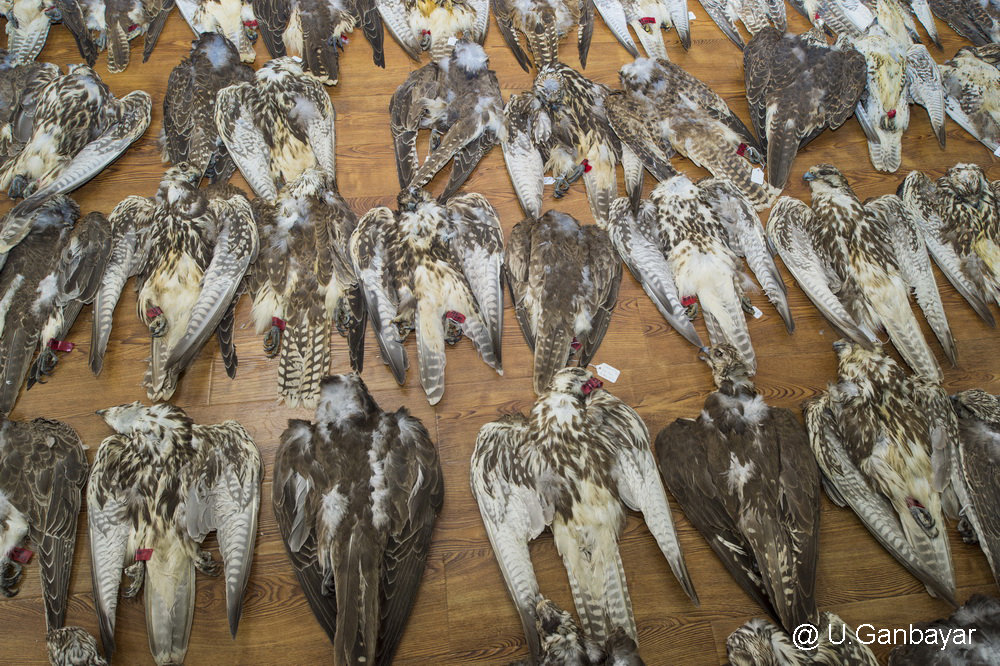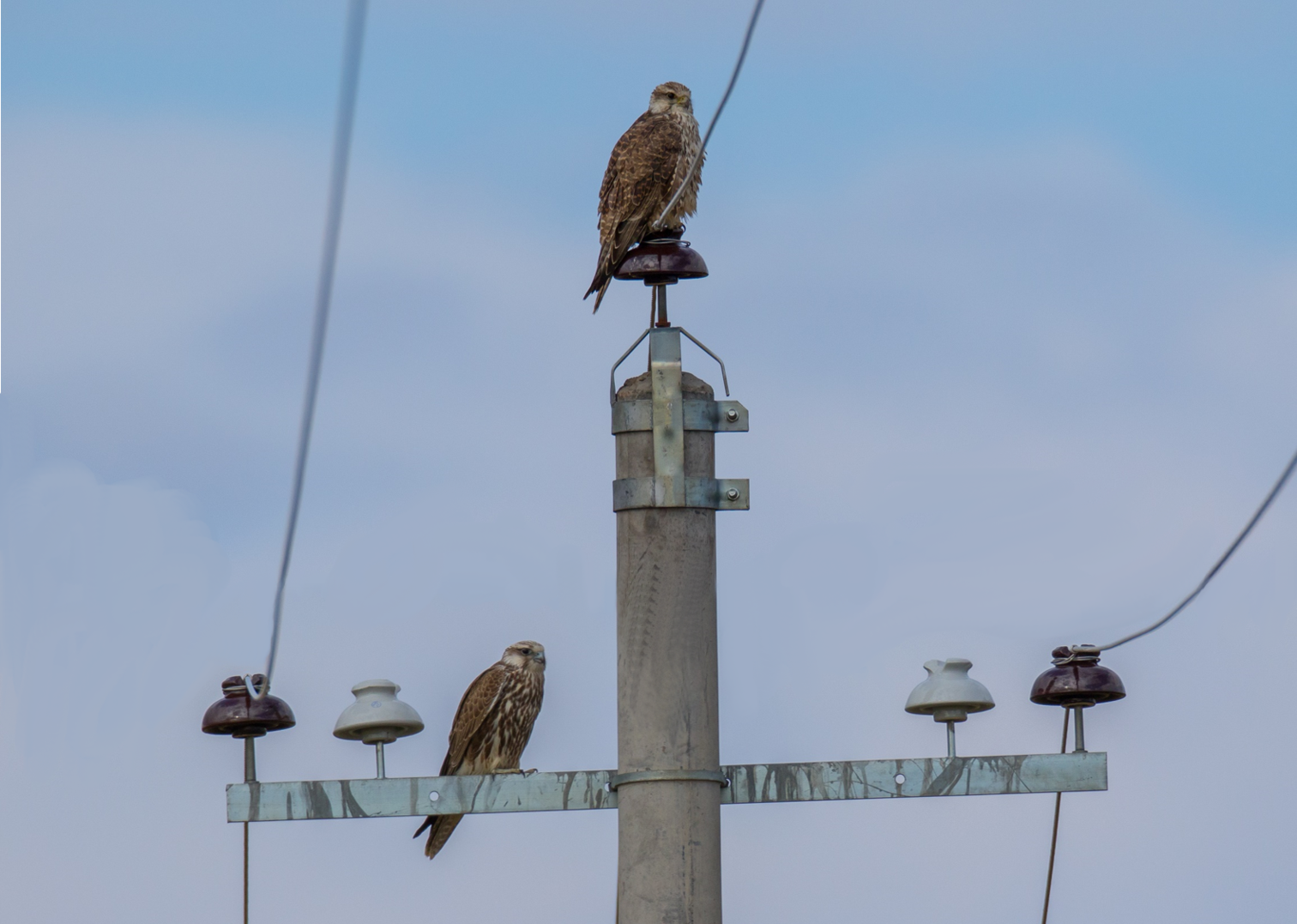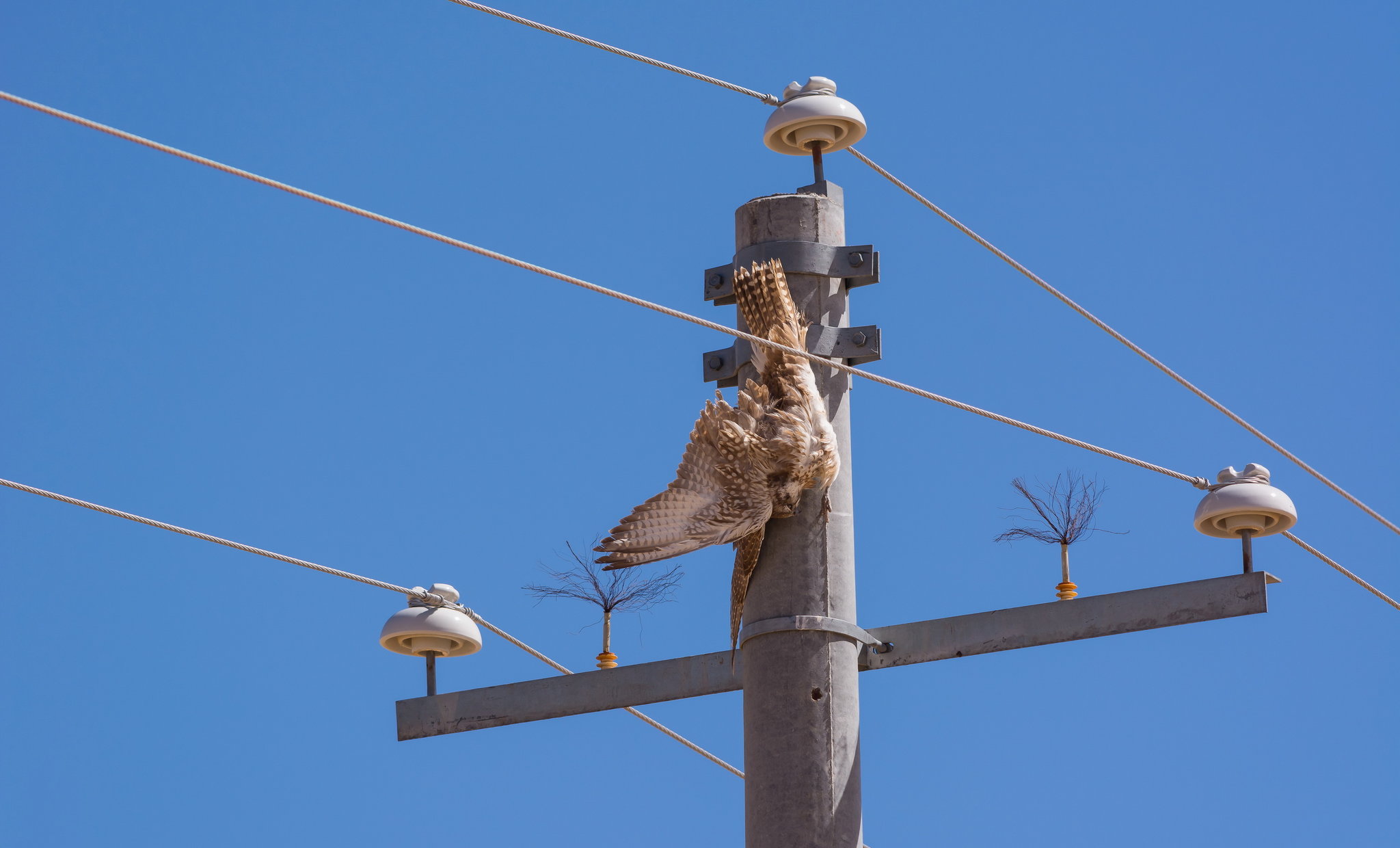Electrocution on medium voltage powerlines
Thousands of birds of prey including the iconic saker falcons are electrocuted across Mongolia on powerlines. Researchers fight to stop the killing and find solution
Perhaps, at the moment, Mongolia holds the record of one of the worst raptor electrocution accounts in the world. Every year, thousands of birds of prey and many other species are dying due to electrocution mostly on medium voltage electricity transmission lines throughout Mongolia. Over half of the electrocuted birds is the Saker Falcon which is a national bird of Mongolia. It has been estimated that between 800-4000 saker falcons are being electrocuted each year in Mongolia.

Electrocution in the Mongolian steppe is resulted from birds contacting live conductor cables either when perched at the top of the grounded steel-reinforced concrete pole or when perched on the steel crossarm. A faulty design approved by government agencies and lack of government regulations to ensure safety of birds and transmission lines are to blame for this massive scale raptor electrocution in Mongolia.
In March 2017, we organized first national workshop on raptor electrocution in Ulaanbaatar bringing together power line engineers, conservation organizations, and scientists to discuss the issue. Participants delivered a series of recommendations to the government for actions. Eventually, much needed support became available from different sources and many important actions are being taken at all level.

Now with our collaborating partners, we are monitoring the impact, increasing awareness of the issue among stakeholders, conducting trials of mitigation methods for existing lines, developing national standards and guidelines on avian friendly powerlines, and identifying potential risks to prevent further problems. Several most high risk lines have been mitigated using an inexpensive method in two provinces in Mongolia with an average reduction of 85-90%. Our ultimate goal is to eliminate the raptor electrocution in the Mongolian steppe.

At the BirdLife Global Summit that was held in Abu Dhabi in April 2018, HE Mohammed Al Bowardi, the managing director of the Environment Agency of Abu Dhabi announced that Mohamed Bin Zayed Raptor Conservation Fund pledges USD 1 mln to tackle electrocution problem in Mongolia. Later, a MoU was signed in Abu Dhabi on 27 February 2019 by Majid Al Mansouri, Managing Director of MBZRCF, and Mr. Tserendorj Batbayar, Vice Minister of the MET in the presence of Ambassador Chintushig Zorigt. The Vice Minister Batbayar said the project will be a key to stop this mass electrocution in Mongolia.

